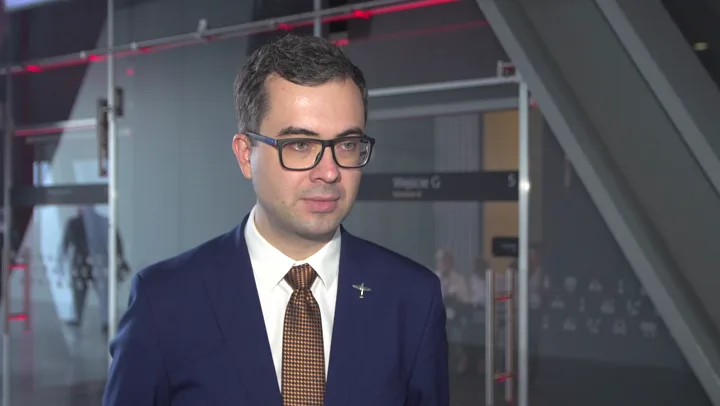The COVID-19 pandemic has been a period of testing for regional airports, but it has also highlighted the need for modernisation in the business approach within the ownership structure and management model. Last year’s government aviation development strategy indicates this. Karol Halicki from the Podlaskie Chamber of Aviation suggests that it might be a good time to start a debate on the partial privatisation of these airports. An analysis of new models should take into account not only economic issues, but also the impact of airports on regional development and the country’s security.
– The current situation of regional airports requires revision. The financial result of individual airports can vary drastically: some regional airports achieve incredible financial results and profits, but unfortunately, the majority are heavily in the red, incurring annual losses. It’s time to develop a new financial model for regional airports, maybe there should be two models, or maybe just one new one,” says Karol Halicki, President of the Board of Bialystok Airport Association and Podlaskie Chamber of Aviation.– I think it’s time to move away from individual analyses of individual airports and focus on broad economic analyses, on the benefits of regional airports for regional development.
The document “Civil aviation development policy in Poland until 2030 (with perspective until 2040)”, adopted by the government in November last year, emphasizes the crucial role of regional airports in enhancing the investment attractiveness of regions, supporting their economic development and creating new jobs. It also suggests that the need for an alternative concept of their operation will be necessary, depending on demand for air transport, development of rail connections in specific regions, or the continued long-term unprofitability of selected regional ports. In addition to purely commercial functions, selected airports can also perform additional functions, such as training and providing infrastructure for entities training new pilots, both civil and military. They may also serve unmanned aerial vehicles, the dynamic development of which will require securing the necessary infrastructure resources in the near future, as well as places for paid hangaring, technical inspections or ad hoc repairs of aircraft.
As the expert emphasizes, the analyses need to focus on non-financial issues, primarily on safety and defence. All regional airports are a significant element of our country’s critical infrastructure for medical flights (air ambulance or patient transport), observation flights (fire detection), and firefighting, but also in extraordinary situations (natural disasters, catastrophes or floods).
The document also notes that due to the inadequate availability of air transport in some regions of Poland, efforts should be made to gradually eliminate so-called white spots on the map of air transport. The Bialystok Airport Association is lobbying for the creation of a new airport located approx. 100 km from the eastern border, near the route connecting Warsaw with Bialystok. This is intended to be a low-budget project involving foreign private investors.
– A regional airport is a critical element of our country’s infrastructure, therefore even those unprofitable ports should be supported by their owners, and who should be the owner of a regional airport is a topic for public debate. Perhaps it’s time for partial privatisation of regional airports – evaluates Karol Halicki.
A real test for regional ports was the COVID-19 pandemic. According to the Civil Aviation Authority, the number of passengers in Polish air traffic in 2020 was over 70% less than in 2019. In the document adopted by the government in November last year, “Civil aviation development policy in Poland until 2030 (with perspective until 2040)”, it was indicated that the pandemic laid bare the operational and financial situation of airports – some regional airports were already struggling with a lack of profitability before the pandemic, and the outbreak only exacerbated problems, which resulted in reducing employment, wages or renouncing previous commitments to maintain financial liquidity. Regional airports in 2020 recorded a net loss (collectively) of PLN 133.2 million. The document also emphasizes that the pandemic has shown that the ownership structure and management models of regional ports require a modern business approach, e.g. cooperation with the private sector.
– If we diagnose well the problems of individual airports and find out why they are in the red, we will be able to develop a completely new model for their financial and qualitative assessment. It’s time to develop a new model of operation and these models exist, they are in Europe, they are in the world – emphasizes the president of the Bialystok Airport Association and Podlaskie Chamber of Aviation. – Airports play a very important role in the functioning of the whole economy, the whole region and it’s important to be able to calculate these intangible values and estimate them in such a way as to support the functioning of the airports. Regional airports need above all peace and a good partner in our country’s authorities, it requires revision and a different view of regional airports as an element of our state’s functioning.
According to the latest data from the ULC, the first half of the year was successful for Polish airports. The number of passengers served was almost 26.6 million passengers, almost 1/5 more than in the pre-pandemic 2019. Nearly 17 million were accounted for by regional airports. Among them, John Paul II International Airport Kraków-Balice had the most passengers and showed the greatest dynamics (5.1 million passengers, +728.5 thousand), followed by Lech Walesa Airport Gdansk (3 million passengers, +339.5 thousand). The airports which showed a drop in the number of passengers transported compared to the first half of 2023 were Warsaw-Modlin, Olsztyn-Mazury and Szczecin-Goleniów.
